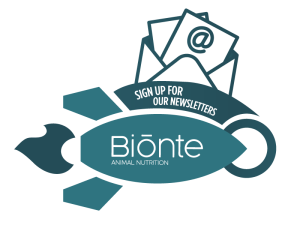Introduction
The limited data on emerging and modified mycotoxins restricts our understanding of their toxicity. The toxicity of modified mycotoxins can be equal, lower or higher than the mother mycotoxin, but there is little information on this matter. In this case, it is important to consider that poultry exposure to these metabolites may result from the direct ingestion of these modified forms or may be product of the animal´s metabolism.
Modified mycotoxins of zearalenone (ZEN)
In the case of ZEN, it has been observed that the main metabolite in broiler chickens and laying hens is usually β-zearalenol (β-ZEL), while in turkeys is α-zearalenol (α-ZEL). In all cases, glucuronidation was the major conjugation reaction.
In poultry, exposure to ZEN is estimated to account for around the 93-100% of cases related to this mycotoxin as there are no data on the modified forms (α-zearalanol (α-ZAL) + β-zearalanol (β-ZAL) + zearalanone (ZAN) + α-ZEL + β-ZEL). However, considering the very high no-observed-adverse-effect levels (NOAEL) for poultry, and the composition of their diets, EFSA (2017) considered the risk of health effects from ZEN and its modified forms to be extremely low for poultry species. Based on the observed reduction in lymphocytes and swelling of the ventricles, turkeys are more resistant to ZEN than chickens (NOAEL: 9100 µg/kg BW vs. 7500 µg/kg BW, respectively).
The oestrogenic activity (related with toxicity) of ZEN and its metabolites is presented, observing difference between the modified mycotoxins and the mother mycotoxin: α-ZEL > α-ZAL > ZEN = ZAN = β-ZAL > β-ZEL.
Modified mycotoxins of Deoxinivalenol (DON)
In the case of DON, DON-3-glucoside (DON-3G) is the main plant metabolite of DON and, unlike pigs, chickens do not have the ability to hydrolyse DON-3G back to DON. However, almost complete hydrolysis of 3-acetyl-DON (3-Ac-DON) to DON and partial hydrolysis of 15-acetyl-DON (15-Ac-DON) to DON has been observed (EFSA, 2023). Depending on the mechanism of action on the ribosome, DON-3G, 3-Ac-DON and 15-Ac-DON can be expected to show similar toxicity in the gut. Based on no-observed-adverse-effect levels, turkeys are less sensitive to DON than broilers, hens and ducks.
Nevertheless, Alizadeh et al. (2016) evaluated the cytotoxicity and impact on intestinal permeability of DON and its modified forms in Caco-2 cells. The results showed that the toxicity of 3-Ac-DON is comparable to DON, although it is less cytotoxic and has a lower impact on permeability. As for 15-Ac-DON, it appears to be slightly more potent than DON while DON-3G and de-epoxy-DON (DOM-1) did not exert measurable adverse effects on the intestinal barrier.
On the other hand, DON-3-sulfate (DON-3S) is an important metabolite in poultry. Jurisic et al. (2019) evaluated the transfer of this metabolite to eggs and considered that there is no significant risk to public health due to the transfer of DON or DON-3S to eggs, even if the non-toxic DON-3S metabolite per se could be hydrolyzed back to free DON in the intestine of the egg consumer.
Table 1. Summary of in vitro and in vivo studies on the effect of modified mycotoxins in poultry1.
| Reference | Study | Mycotoxins | Effects | |
|---|---|---|---|---|
| Leitgeb et al. (1999, 2003) reference from EFSA (2014) | In vivo | Broiler chickens 37 d | 800 ppb beauvericin 5600 ppb DON 700 ppb 15-acetylDON 600 ppb ZEN 500 ppb moniliformin 300 ppb NVI (maize naturally contaminated) | No negative effect on BWG, FCR, liver weight No differences in meat quality, blood parameters |
| Leitgeb et al. (1999, 2003) reference from EFSA (2014) | In vivo | Turkey 11 weeks (growing period) | 2480 ppb beauvericin 1200 ppb DON 300 ppb 15-acetylDON 200 ppb ZEN 3000 ppb moniliformin 200 ppb NVI (maize naturally contaminated) | No differences in BW, FCR No differences in relative weight of the cooked carcass, spleen, heart, bursa of Fabricius, liver No differences in blood parameters |
| CODA-CERVA (2011/2012) reference from EFSA (2014) | In vivo | Broiler chickens | 12720 ppb enniatin B 4060 ppb enniatin B1 10310 pb beauvericin DON 3-acetyl-, 15-acetyl-, de-epoxy-DON ZEN, α-, β-zearalenol T2 HT2 | No negative effects |
| Pierron et al. (2016) | In vitro | Caco-2 cells | DON DON-13-glucoside | Cytotoxic, ↑ Intestinal permeability |
| Santos and van Eerden (2021) | In vivo | Broiler chickens 35 d | 0-14 d: 2060 vs 878 ppb DON | ↓BWG, ↑FCR (not 28-35d, with a diet marginally contaminated) ↑ VH:CD ileum 14 ↓ VH:CD jejunum 28d, ileum 28d ↓VH: jejunum, 28 d, ↑ CD ileum 28d ↑ globe cells ileum 14d Marker of intestinal lesion: lack in jejunum (not in ileum) Intestinal viscosity: increased in duodenum 14d |
| Yunus et al. (2012) reference from EFSA (2023) | In vivo | Broiler chickens 35 d | 1680, 12200 ppb DON 10, 200, 1450 ppb 3-10, 150, 1090 ppb acetyl-DON ZEN | ↓BW, FI ↓ weight/size intestine ↓ VH, CD |
| Devreese et al. (2014) reference from EFSA (2017) | In vivo | Turkeys | 5700 ppb DON, 15-acetylDON | ↓ VH, villus surface area |
| Alizadeh et al. (2016) | In vitro | Caco-2 cells | DON DON-3-acetyl DON-15-acetyl DON-3-glucoside | Cytotoxic, ↑ intestinal permeability ↑ intestinal permeability ↑↑ intestinal permeability |
1BW: body weight; BWG: body weight gain; C: crypt depth; FI: feed intake; FCR: food conversion ratio; VH: villus height.
Conclusion
Thus, it is clear that more research is needed on modified mycotoxins derived from the different mycotoxins such as ZEN or DON mentioned, as well as in other cases derived from fumonisins, T2 toxin, etc. given their impact on poultry health.



